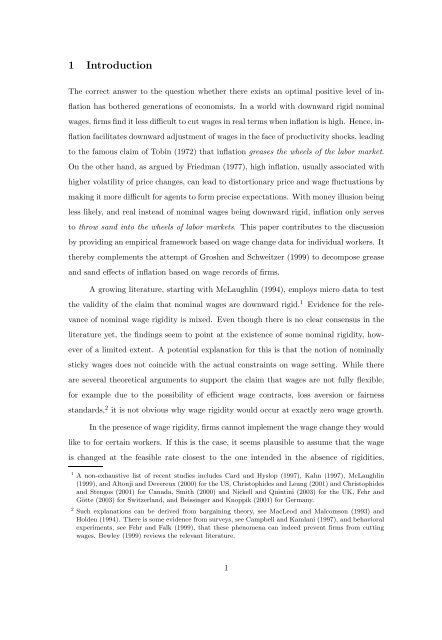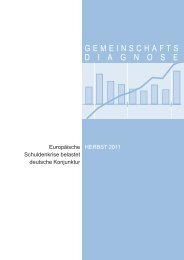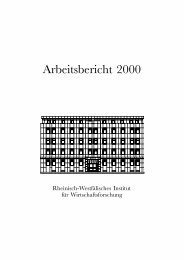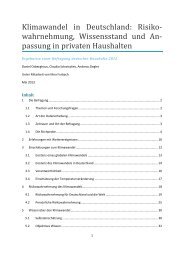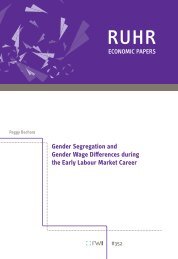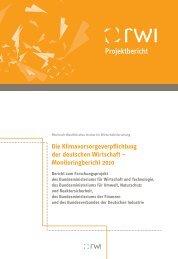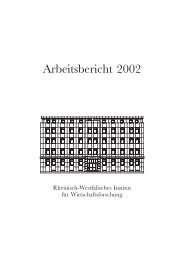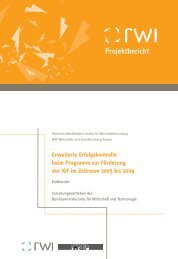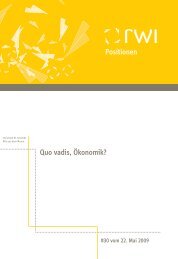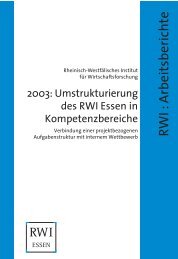RW I:Discussion Papers - Rheinisch-Westfälisches Institut für ...
RW I:Discussion Papers - Rheinisch-Westfälisches Institut für ...
RW I:Discussion Papers - Rheinisch-Westfälisches Institut für ...
You also want an ePaper? Increase the reach of your titles
YUMPU automatically turns print PDFs into web optimized ePapers that Google loves.
1 Introduction<br />
The correct answer to the question whether there exists an optimal positive level of inflation<br />
has bothered generations of economists. In a world with downward rigid nominal<br />
wages, firms find it less difficult to cut wages in real terms when inflation is high. Hence, inflation<br />
facilitates downward adjustment of wages in the face of productivity shocks, leading<br />
to the famous claim of Tobin (1972) that inflation greases the wheels of the labor market.<br />
On the other hand, as argued by Friedman (1977), high inflation, usually associated with<br />
higher volatility of price changes, can lead to distortionary price and wage fluctuations by<br />
making it more difficult for agents to form precise expectations. With money illusion being<br />
less likely, and real instead of nominal wages being downward rigid, inflation only serves<br />
to throw sand into the wheels of labor markets. This paper contributes to the discussion<br />
by providing an empirical framework based on wage change data for individual workers. It<br />
thereby complements the attempt of Groshen and Schweitzer (1999) to decompose grease<br />
and sand effects of inflation based on wage records of firms.<br />
A growing literature, starting with McLaughlin (1994), employs micro data to test<br />
the validity of the claim that nominal wages are downward rigid. 1 Evidence for the relevance<br />
of nominal wage rigidity is mixed. Even though there is no clear consensus in the<br />
literature yet, the findings seem to point at the existence of some nominal rigidity, however<br />
of a limited extent. A potential explanation for this is that the notion of nominally<br />
sticky wages does not coincide with the actual constraints on wage setting. While there<br />
are several theoretical arguments to support the claim that wages are not fully flexible,<br />
for example due to the possibility of efficient wage contracts, loss aversion or fairness<br />
standards, 2 it is not obvious why wage rigidity would occur at exactly zero wage growth.<br />
In the presence of wage rigidity, firms cannot implement the wage change they would<br />
like to for certain workers. If this is the case, it seems plausible to assume that the wage<br />
is changed at the feasible rate closest to the one intended in the absence of rigidities,<br />
1 A non-exhaustive list of recent studies includes Card and Hyslop (1997), Kahn (1997), McLaughlin<br />
(1999), and Altonji and Devereux (2000) for the US, Christophides and Leung (2001) and Christophides<br />
and Stengos (2001) for Canada, Smith (2000) and Nickell and Quintini (2003) for the UK, Fehr and<br />
Götte (2003) for Switzerland, and Beissinger and Knoppik (2001) for Germany.<br />
2 Such explanations can be derived from bargaining theory, see MacLeod and Malcomson (1993) and<br />
Holden (1994). There is some evidence from surveys, see Campbell and Kamlani (1997), and behavioral<br />
experiments, see Fehr and Falk (1999), that these phenomena can indeed prevent firms from cutting<br />
wages. Bewley (1999) reviews the relevant literature.<br />
1


